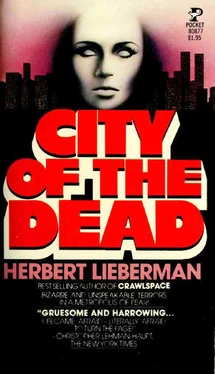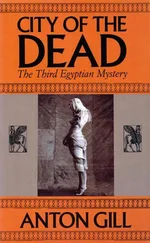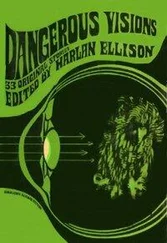Silly goddamn kid. Postcards and dirty pictures. Coked to the gills on hash. Gonna be a big, famous model. Be dead in a year if she’s lucky — Oh, Christ, Lolly. Don’t study medicine for me. Do it for yourself. Only for yourself. If there’s something else you want to do, do it. But do it for yourself —
Suddenly he rises from his desk as if summoned, and not knowing exactly why, he starts from the office. Footsteps reverberating down the empty hall. The door of his office still open behind him, a plane of pale-yellow light spilling across the darkened corridor.
Something about that goddamned hand.
His feet, that slurred tread, the ache shooting down the thigh into the calf, a long, cold, thin blade of pain. Down he goes. Down Stairway D, spiraling ever downward into the green world of the mortuary below, turned gray and penumbrous now with only the scant illumination of a few dim night lights. No matter though for Konig. He knows the way by heart. Could find the place in his sleep. Peaceful there now with everyone gone. He almost prefers it. Just like old Bahnhoff. His own world. All to himself. Everyone but him an intruder. No noise now. No confusion. No questions and answers. Bumbling attendants and meddlesome colleagues. The place quiet, immaculate. Scrubbed clean of the day’s carnage. White tile and stainless steel. Gurney carts, minus their dismal, sacked cargoes, all lined up in neat, long rows. Shiny, efficient, expectant. Awaiting the morning flood of mayhem.
A single bare bulb illuminates the place, casting huge cavelike shadows across the walls. The only sound the soft, high whir of refrigerator motors cooling cadavers. Konig opens one of the body boxes and peers in. There in the dark chill, wisps of icy vapor rising from it, is the body of the young Spanish girl found in the Harlem stairwell that morning. Yesterday she was alive. Tomorrow she’ll be on the tables bright and early in the morning.
Konig moves on. The next, a badly decomposed cadaver found up in the Bronx Zoo that afternoon. Not much left—a separate skull and mandible. Torso and, extremities clad in a white short-sleeved shirt, a pair of dark-blue denim trousers, dark leather belt, heavy metal buckle. Numerous live and dead worms and extensive green and white mold cover the body surface, now largely mummified. Despite refrigeration, there is heavy cadaveric odor. This too will go on the tables tomorrow morning.
Next, the body of an adult Negro female. Well developed. Well nourished. Approximate age thirty. About 5′ 5″. Weight 122 pounds. Eyes open, staring into the icy darkness of her vault. The conjunctivae are pale; the corneas, clouded; the irides, brown with evidences of tache noire. Somewhere on her retinae is imprinted the image of her executioner—the last thing he ever saw. A long, gaping knife wound runs from just below the sternum to the pubic symphysis, virtually gutting her. A sizable amount of small intestine bulges outward from the wound, a strange flowerlike excrescence, like a red anemone blooming there between her breasts.
Next, the young man found that morning soaking in a bathtub with an ice pick in his chest. The pick is gone now, off to the police laboratory. And the youth lies there, handsome and curiously vital-looking even in death. A young black king dreaming. On the verge of waking to go forth.
The next locker is the one he’s been looking for. Contained within it as well as in the next three lockers are the neatly packaged remains that were exhumed from the muddy shoreline near Coenties Slip that afternoon. There are the legs and arms, the pelvic and thoracic sections, the packages of feet and genitals, jawbones and ears, gobbets of flesh. All neatly packaged in plastic and meticulously labeled, ready for the exhausting and largely fruitless business of identification.
And there among all the other packages, in a separate receptacle of its own, what he has been looking for, what has been on his mind for several hours without his actually even knowing it, the hand with the luridly enameled fuchsia fingernails. It lies on its side in the plastic bag, waxen and rigored—frozen by refrigeration into an exquisitely sculptured gesture. Rather like the plaster hand of a supplicant broken from a piece of religious statuary.
Konig lifts the package from the freezer and gazes down once more at the garishly painted thing. He takes it out of its container, holding it in his hand, turning it in the light. There has been, he now sees, an attempt to mutilate the fingerprints on the hand by abrading them on a file or against a hard surface, thus making the job of identification more difficult. Not unusual. He’s seen that one before. But there is something, else about the hand. Something far more interesting suddenly occurs to him, what he’s been mulling about all evening, ever since he first saw the hand dredged up, still dripping mud and slime from the river. And that is the fact that what he, and what everyone else down there at the time, had blithely assumed was the hand of a woman, he now feels might very well be the hand of a man.
Suddenly he turns, glancing upward as he does so at some vague, indeterminate point above him. A footstep rings softly on the metal steps of Stairway D. He listens a moment more, then turns back to the hand, dismissing as implausible the notion of anyone coming down there at that time of night.
Then suddenly another step. A pause. Then a series of two or three more steps, tentative and stealthy.’
In the next moment he has returned the wrapped hand to its place in the locker and slipped noiselessly through the swinging doors of the autopsy room.
Several moments pass while he waits there in the great, gloomy, formalin-sodden shadows. From where he stands just behind one of the doors, he has an excellent vantage of the wall lockers through a small glass window cut into the center of the door. Listening to the uneasy, slightly wheezing sound of his own breathing, Konig waits. He waits for what seems an extraordinary length of time. Until it seems to him that he’s imagined everything, that he will wait there forever, listening to the vague creaks and groans of metal stairs contracting and expanding, settling into their fastenings.
Several times he peers through the glass window, seeing nothing but the long, impassive wall of gray lockers. He’s quite ready to forsake the whole thing, but something tells him to wait. For besides the revelation of the dismembered hand, there’s yet another piece of business down here remaining to be settled.
In the next moment, within that small pane of window glass is framed the face of a man. It is an old, tired face, deeply lined, full of apprehension, a little appalled, yet a little excited at finding itself in such an unlikely place so late at night. It’s not an unpleasant face either, but rather kindly and avuncular. The face of an elderly Italian man whom Konig himself hired more than twenty years ago.
Moving with the stealthy tread of a small mouse venturing out of its hole, the man creeps toward the wall lockers, pausing several times, glancing nervously around before he reaches his destination. Once there his eyes scan wildly up and down the numerical labels, on each drawer. Then he goes about systematically correlating locker numbers with names and entering them on a clipboard.
Shortly, he pauses before a locker. With a simple motion he reaches up, pulls out a drawer, and the body of Barbara Rosales rolls out once more into the dim light.
Konig watches the man hovering there above the sheeted cadaver. The man appears to be studying the face of the dead girl, a mixture of pity and awe in his eyes. Then, with a slow, tremulous gesture, he draws the sheet downward, revealing the badly battered, unclad body.
It is at that point that Konig steps out of the darkened autopsy room. “All right, Angelo.”
Читать дальше












